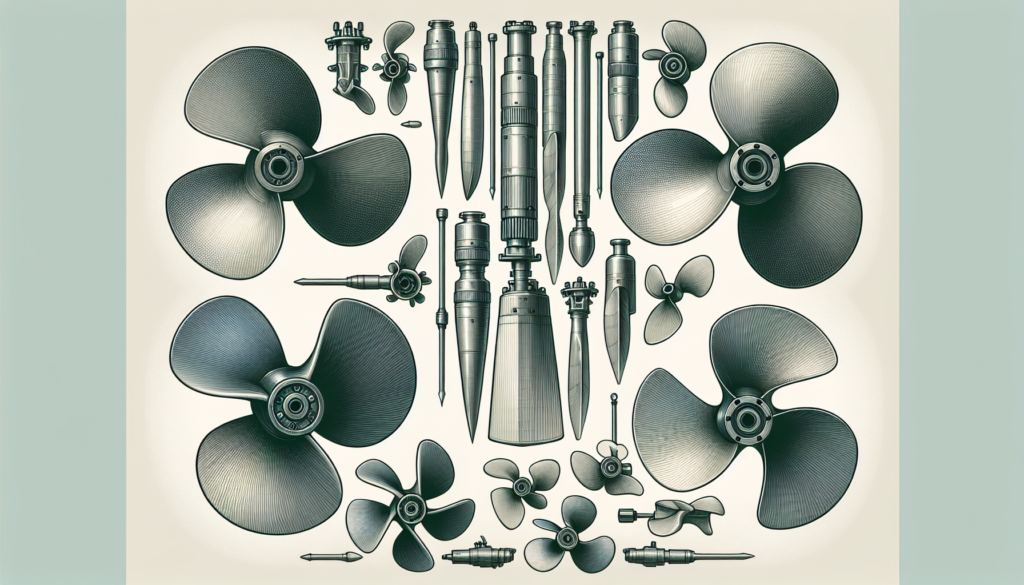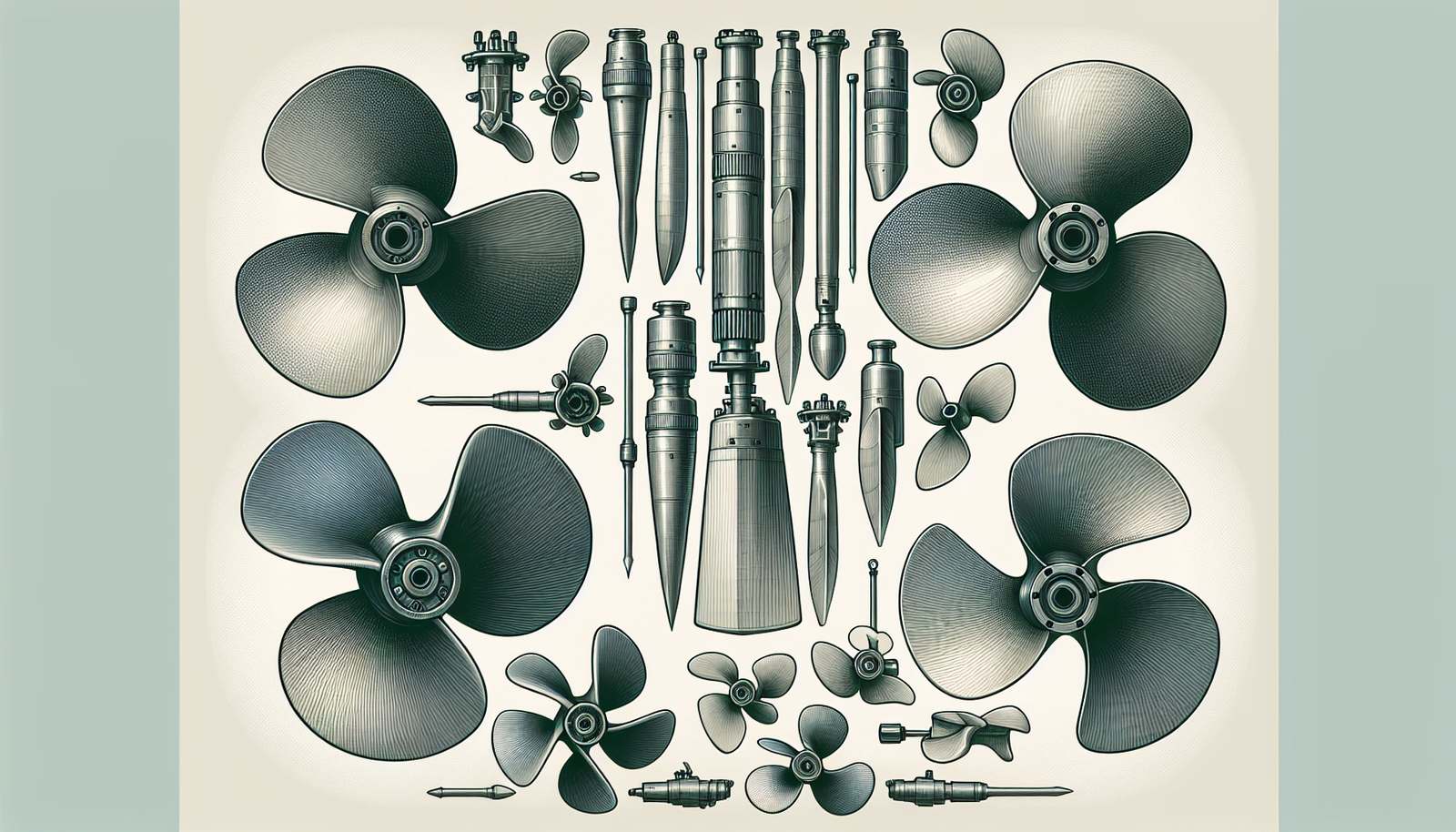Navigating the waters can be a challenging task, especially if the propeller on your boat isn’t functioning optimally. Just like a car engine needs the right type of fuel to function efficiently, your boat engine needs the appropriate propeller to operate at its best. Your boat’s speed, engine performance, fuel efficiency, and overall boating enjoyment hinge on your choice of a propeller. In the forthcoming article, “Expert Tips for Choosing the Right Propeller for Your Boat Engine,” you will find valuable insights from industry experts that will guide you in making the correct propeller selection bespoke to your boat’s specific needs. Buckle up and get ready to get your boat cruising at its optimal capacity!
Understanding the Function of a Propeller
Before delving into the specifics of propeller choice and maintenance, it’s necessary to understand what a propeller does and how it works.
Basics of how a propeller works
A propeller is essentially a type of fan that transmits power by converting rotational motion into thrust. This thrust propels your boat forward in the water. The speed and overall performance of your boat hinge significantly on how efficiently your propeller transfers that power.
Impact of propeller on boat’s performance
The propeller’s influence on your boat’s performance cannot be understated. An optimal propeller will ensure fuel efficiency, give you the desired speed, and prevent engine damage. A poorly suited propeller can reduce fuel efficiency, limit your speed, and even harm the engine over time.
Determining Your Boat Engine’s Propeller Requirements
Once you understand the function of a propeller, it’s time to decipher what your boat’s engine specifically needs in terms of propeller performance.
Importance of engine’s horsepower and torque
The horsepower and torque of your boat’s engine play a major role in propeller selection. The engine’s horsepower represents the power it can produce, which will affect the size and material of the propeller your boat needs.
Sizing propellers according to boat engine size
When it comes to sizing propellers, one key consideration is the size of your boat engine. Generally, larger engines require bigger propellers to effectively translate the engine’s power into thrust.
Checking the manufacturer’s propeller recommendations for your engine
An easy place to start when determining your boat’s propeller requirements is with the engine manufacturer’s recommendations. These suggestions are typically based on intensive testing for a variety of boat types and conditions and should thus serve as a reliable guide.
Material Considerations for Boat Propellers
When choosing a propeller, the material it’s made of is another critical factor to consider as it can affect the propeller’s performance, durability, and cost.
Comparing stainless steel, aluminum, and composite propellers
Stainless steel, aluminum, and composite propellers each have their own pros and cons. Stainless steel propellers are highly durable and efficient but can be expensive. Aluminum propellers are more affordable and great for general use, but they’re not as durable. Composite propellers are lightweight and economical but may not provide the same performance as their metal counterparts.
How material impacts durability and performance
The material of a propeller significantly impacts both its durability and performance. More durable materials, like stainless steel, will stand up better to wear and tear, extending the propeller’s lifespan. However, the performance of a propeller, including its efficiency and speed, is determined by a combination of its material and design.
Cost comparison between different materials
While stainless steel propellers are often the most expensive, they can be a cost-effective choice in the long run due to their durability and efficiency. Aluminum propellers are typically the most affordable, yet may require more frequent replacements. Composite propellers, while also affordable, don’t always deliver the same performance and could lead to increased fuel costs over time.

Evaluating Propeller Size
When it comes to propeller size, there are a few key dimensions to keep in mind: diameter and pitch.
Understanding propeller dimensions
The diameter of a propeller is the distance across a circle that the propeller would draw as it rotates. The pitch is the distance the propeller would move in one revolution without slip. Both dimensions are important to consider when choosing a propeller for your boat.
Importance of propeller diameter for your boat engine
The diameter of your propeller is tied directly to the power output of your engine. Larger engines often require propellers with bigger diameters to manage the power.
Impact of propeller pitch on speed and fuel efficiency
The pitch of a propeller significantly impacts both your boat’s speed and its fuel efficiency. A propeller with a higher pitch will move your boat faster, but it will also demand more from your engine, which could impact fuel efficiency. Conversely, a lower pitch will provide slower speeds but better fuel efficiency.
Understanding the Number of Blades
One important but often overlooked factor when picking a propeller is the number of blades. Typically, propellers have either three or four blades, each with its own benefits and drawbacks.
Benefits and drawbacks of three-blade propellers
Three-blade propellers are the most common option. They offer a good balance between performance and cost. While they might offer less surface area and consequently less thrust than four-blade propellers, they tend to generate less drag, resulting in higher speeds.
Benefits and drawbacks of four-blade propellers
Four-blade propellers provide more surface area and generally better handling, especially at lower speeds. Moreover, they offer excellent ‘hole shot’ capabilities, which is the ability to quickly get on plane. However, due mainly to increased drag, they might not provide the same top-end speed as three-blade propellers.
Choosing the number of blades based on your boating needs
The appropriate number of blades depends largely on your specific boating needs. If you prioritize speed over handling, you might consider a three-blade propeller. However, if you need superior handling and low-speed performance, a four-blade propeller may be a better option.
Considering the Propeller’s Shape
The shape of the propeller blades can also greatly influence your boat’s performance.
Impact of blade shape on performance
The shape of a propeller blade can impact everything from a boat’s speed to its stability. More curved blades can enhance speed and performance at higher RPMs but may reduce stability. On the other hand, flatter blades often provide better performance at lower speeds and offer greater stability.
Understanding cupped propeller advantages
Cupped propellers have an additional curve or “cup” on the trailing edge of the blade. This creates more surface area for pushing water, which can enhance thrust, increase fuel efficiency, and reduce ventilation and slippage.
Differences between flat and curved propellers
Flat propellers often offer a smooth, stable ride and work well at lower speeds. In contrast, curved blades, in particular those with a cup, are designed to maximize speed and efficiency, even if they cause a slight sacrifice in stability.
Ventilated vs Non-Ventilated Propellers
Another factor to consider when choosing a propeller is whether to go for a ventilated or non-ventilated design.
Understanding how ventilation works
Propeller ventilation occurs when air is drawn from the water surface down into the propeller blades. This can lead to a reduction in propeller efficiency as the introduced air changes the water’s density the propeller is working against.
Pros and cons of ventilated propellers
Ventilated propellers can offer benefits in situations where quicker acceleration or higher top speed is desired, as the ventilation can temporarily reduce the load on the engine. However, excessive ventilation can result in a loss of propulsion efficiency and added strain to the engine over the long term.
When to choose a ventilated propeller
Using a ventilated propeller largely depends on the specific requirements of your boating application. For example, if you’re involved in racing or other high-speed boating, a ventilated propeller might be beneficial. However, for most general boating activities, a non-ventilated propeller would be perfectly adequate.
Propeller Hubs and Drives
Propellers aren’t just about blades and pitch; the hub and drive are also important components.
Different types of propeller hubs
Propeller hubs vary in design, from press-in rubber hub systems to interchangeable hub systems. Each has its pros and cons. The right one for you depends largely on your engine drive, with most manufacturers specifying the recommended type.
Importance of matching the drive to the propeller
It’s essential to match the propeller to your boat’s drive, as different drives can transmit power differently, affecting the efficiency—and in turn, the performance—of your propeller.
Replacement and maintenance of propeller drives and hubs
Just like the propeller blades, the drives and hub require regular maintenance. Over time, shifts caused by hitting underwater objects or normal wear and tear can make it necessary to replace these components. Always consult with a professional in these instances.
Installing and Testing the Propeller
Once you’ve chosen the right propeller, it’s time for the installation and testing process.
Key installation steps for boat propellers
Proper installation involves more than just attaching the propeller to the drive. You’ll need to ensure it’s securely fastened, well-lubricated, and free from grime or debris. Skipping these steps could lead to propeller damage or performance issues.
Testing process for new propellers
After installing your new propeller, don’t forget to test it. Look for any vibrations or performance issues, as these can be signs of a problem. To get the most accurate results, test your boat under various conditions, including different speeds and loads.
Adjusting propeller setup based on test results
Based on the results from your initial testing, you may need to adjust your setup. Consider elements like pitch, blade count, and material as you fine-tune your propeller configuration. If you’re unsure, a marine technician or propeller specialist can provide valuable guidance.
Maintaining Your Boat’s Propeller
Your new propeller isn’t a set-it-and-forget-it piece of equipment. Regular maintenance is key to keeping it in good shape and ensuring optimal performance.
Routine maintenance tips for propellers
Regular maintenance should involve inspecting your propeller for damage, ensuring it’s free from debris, and properly lubricating it. Additionally, your propeller should be removed and thoroughly cleaned at least once a year.
Recognizing signs of propeller wear and damage
Keep an eye out for signs of wear and damage on your propeller, such as cracks, pitting, or bent blades. Ignoring these can lead to more serious issues, diminishing your boat’s performance, or even causing engine damage.
When to repair versus replace a boat propeller
If your propeller is damaged or excessively worn, you might ask yourself: is it better to repair or replace it? Minor damage, such as nicks or small bends, can often be repaired. However, significant damage, such as severe pitting, cracks, or bent blades, usually calls for a full replacement.


[…] choosing the right propeller for your boat is pivotal for optimizing its performance. It’s not only about how your boat moves, but also about the efficiency, fuel usage, and overall engine health. […]